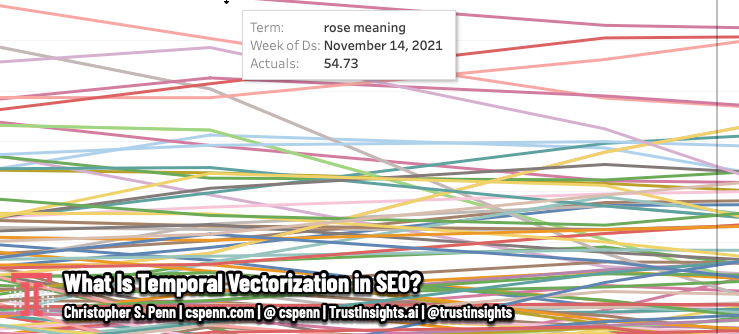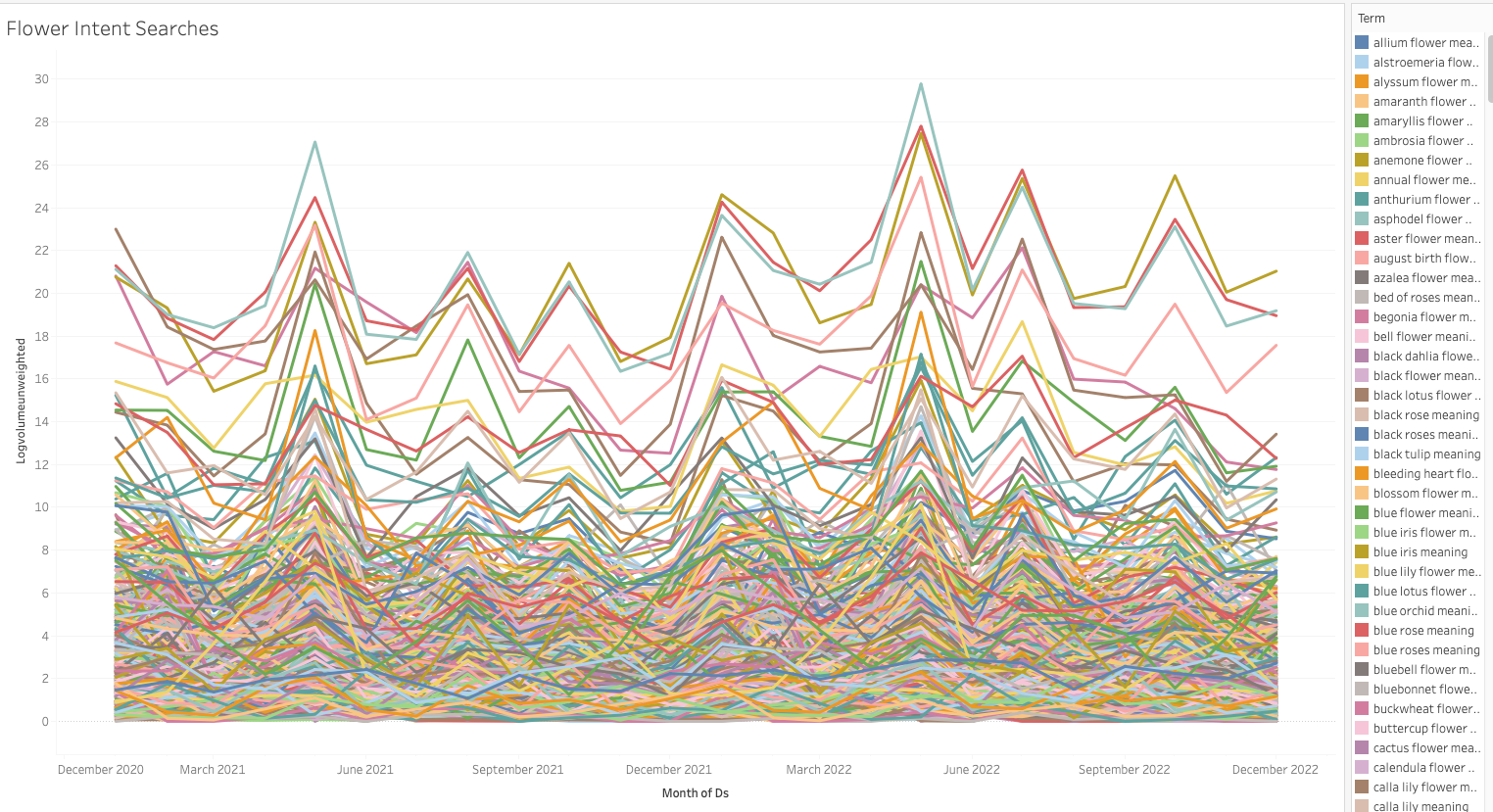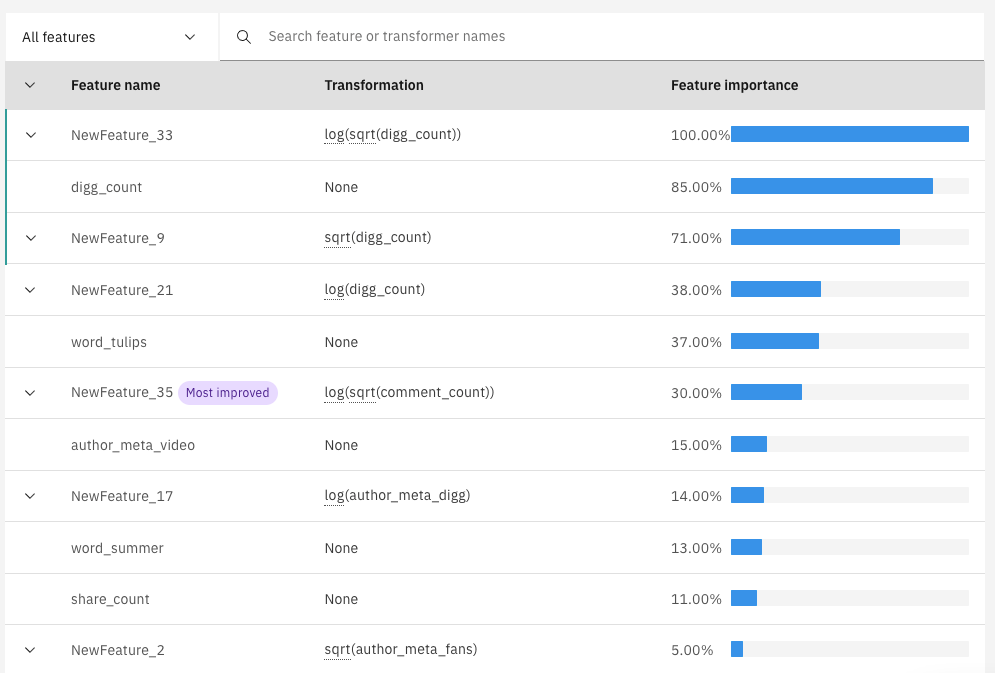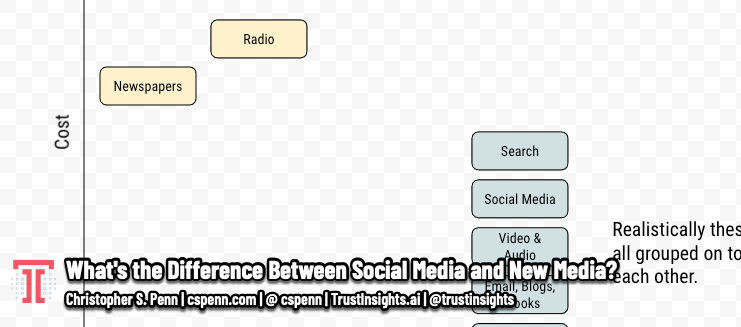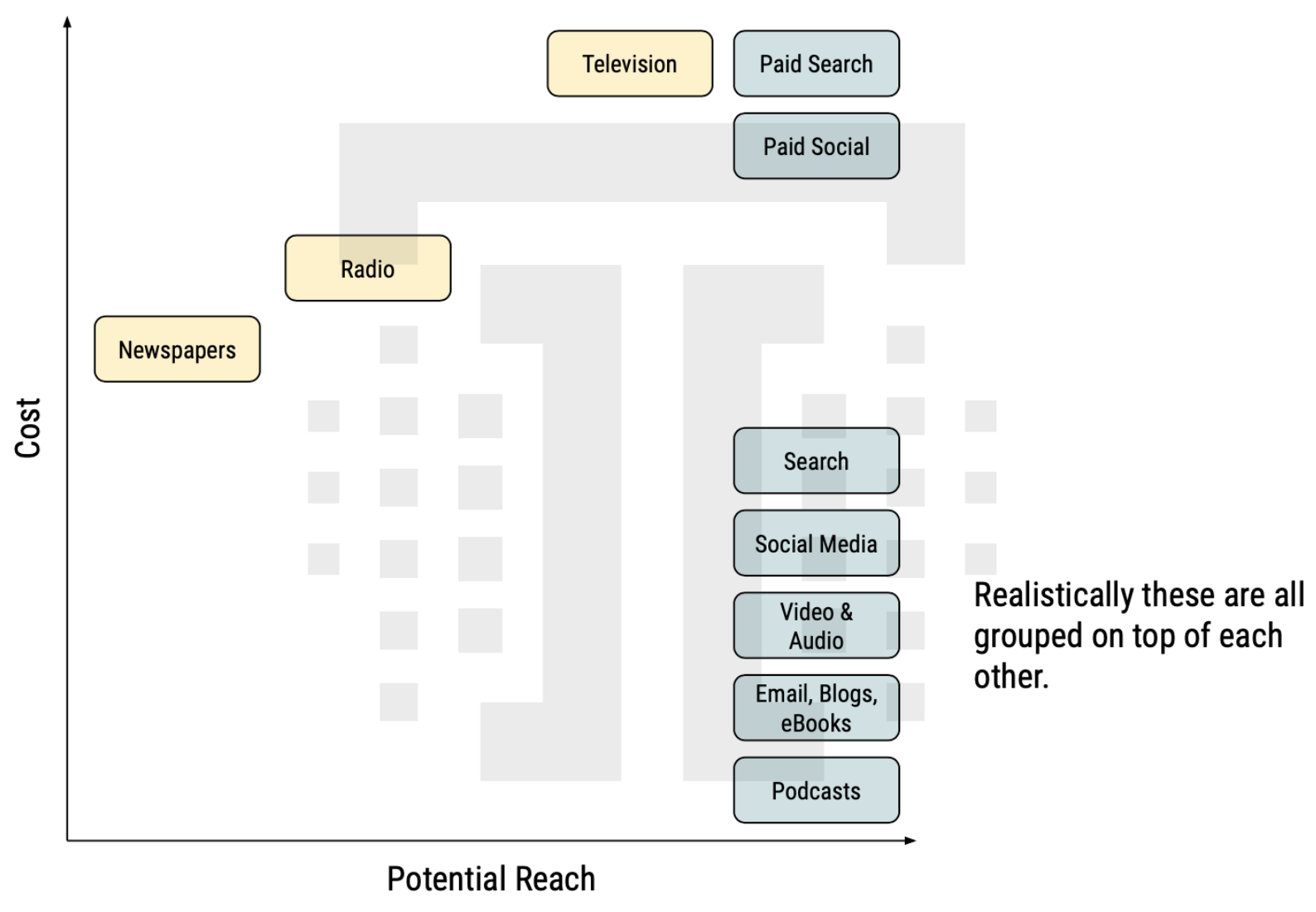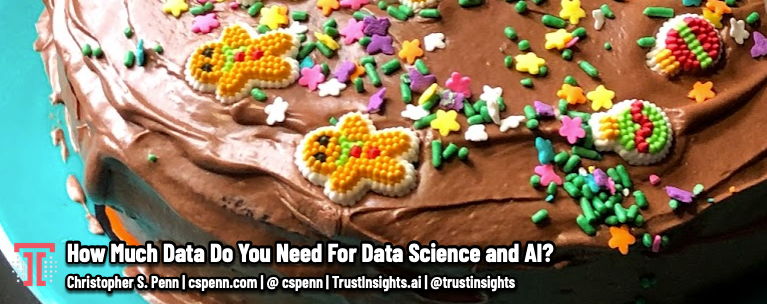Almost Timely News, 28 November 2021: The Roundups Are Coming, Temporal Vectorization in SEO :: View in Browser
Learn the fundamentals of marketing analytics in a brand new talk »
What’s On My Mind: The Inevitable Year End Roundups
Every year, just before the Thanksgiving holiday, the emails come in. “We’re doing a roundup/trend forecast of what’s hot in marketing and would like you to contribute.”

While I’m always pleased that folks ask, the reality is that these roundups tends to be one of two things when they finally make it live.
- They’re tired rehashes of the obvious. Mobile has been a trend since 2007. Privacy has been a trend since the early 2010s. VR/AR has been a trend since the mid 2010s.
- They’re sales pitches for whatever the brand is selling. The CDP company will publish roundups and trends saying CDPs are the next big thing. The AI company will do the same for AI. Popular speakers on Clubhouse will say social audio is the thing. NFT sales folks will say it’s NFTs.
So, how do we do this better? Unsurprisingly, I’m going to suggest instead of asking for people’s opinions, we look at data. (shocking, I know) Here’s a couple of different ways we could slice this. Let’s say we’re all about content marketing. So we’ll take the top X headlines this year by organic traffic for the content marketing keyword space and slice up our data. What are the words and phrases that the top 25% (the upper quartile) use that are different than the words and phrases that the bottom 25% (the lower quartile) use? That’s a way of picking apart the data and showcasing what really stood out this year.
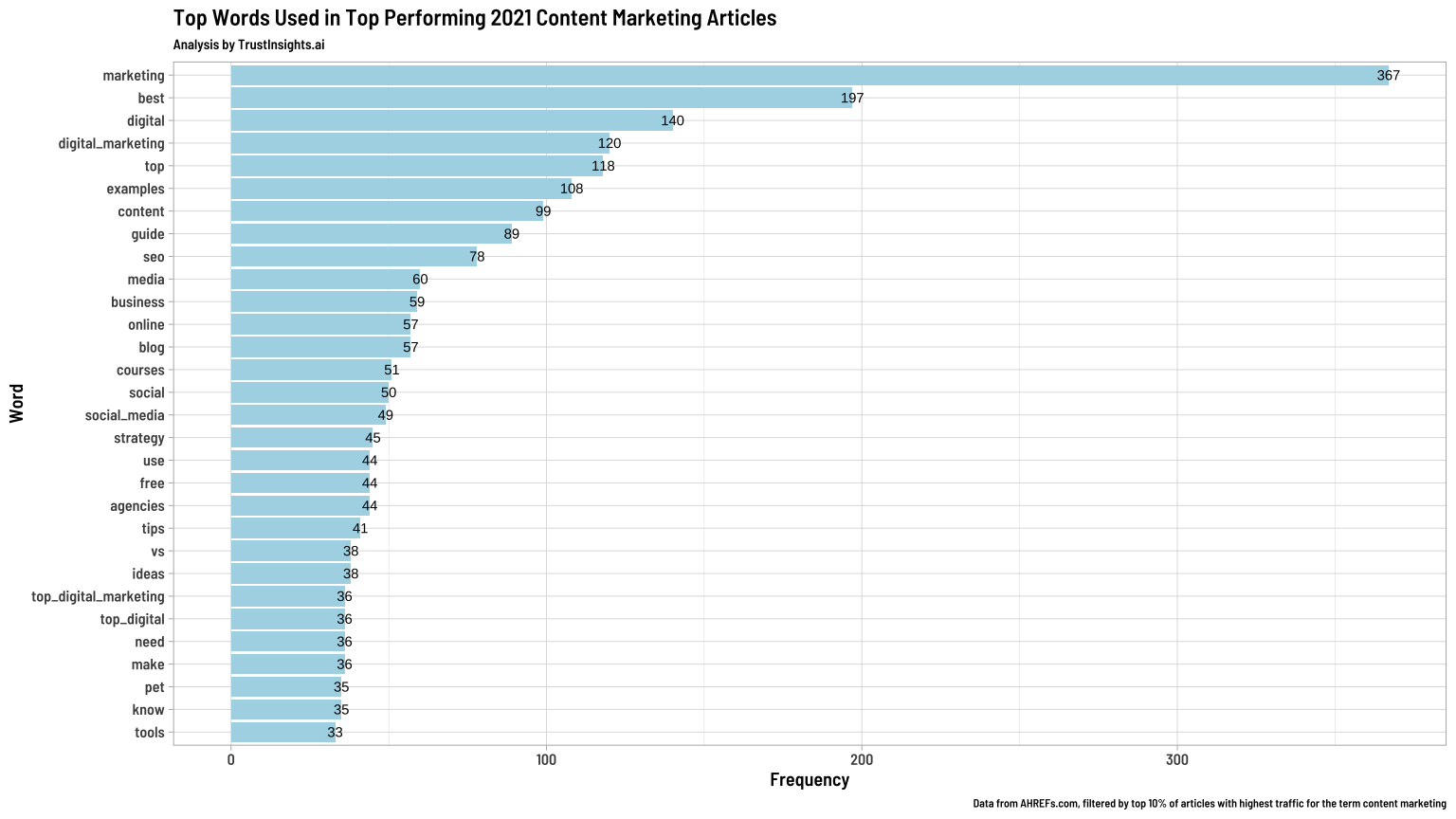
While many of these terms also suffer from the curse of the obvious, there is one angle that I think is interesting and might bear more digging into. When we look at both the words overall and some of the articles that make it up, 2021 was the year ad and PR agencies started admitting they weren’t especially good at content marketing and started getting more help from outside parties. Larger agency conglomerates simply vacuumed up content marketing agencies, while smaller agencies sought to add specialists when possible, albeit in a tight job market.
We could do the same with tweets, or Google News articles, or blogs just from a selected group of companies. But whatever it is, instead of purely self-serving opinion or the blatantly obvious, we’ll at least come up with something slightly more based in reality.
So please, as you do your year-end recaps and prognostications, use some of the bountiful, inexpensive or even free data available to you to spot trends and find what stands out in a crowded media space.
Share With a Friend or Colleague
If you enjoy this newsletter and want to share it with a friend/colleague, please do. Send this URL to your friend/colleague:
https://www.christopherspenn.com/newsletter
ICYMI: In Case You Missed it
If I had to suggest only one of these articles to read from this week, it would be the piece on temporal vectorization in SEO. This is a new way of thinking about your SEO keywords and topics.
- What is Temporal Vectorization in SEO?
- Almost Timely News, 21 November 2021: The Widening AI Gap, 2022 Marketing Trends, SEO AMA
- What’s the Difference Between Social Media and New Media?
- How Much Data Do You Need For Data Science and AI?
Skill Up With Free Classes
These are just a few of the free classes I have available over at the Trust Insights website that you can take.
- Fundamentals of Marketing Analytics (new!)
- How to Think About Google Analytics 4 (new!)
- Proving Social Media ROI
- Paradise by the Analytics Dashboard Light: How to Create Impactful Dashboards and Reports
- How to Deliver More Value as an Agency
Thank You Notes
These are the places you’ve had or mentioned me – on your podcast, on your blog, in your newsletter. Thank you!
- Listen to your customers, advises Christopher Penn, Co-Founder and Chief Data Scientist at TrustInsights.ai
- Content Marketing Analytics 101 (YouTube)
- Data-Driven PR with Prezly (YouTube)
- Diving into Data for Marketers – A.I., Google Updates, and More
What I’m Reading: Your Stuff
Let’s look at the most interesting content from around the web on topics you care about, some of which you might have even written.
Social Media Marketing
- Instagram Engagement via Trust Insights Marketing Analytics Consulting
- A Guide to Using Social Media Hashtags via Infographic
- TikTok taps BuzzFeed to produce the first sponsored weekly live shows
Media and Content
- How to Create a Content Calendar
- Creating value when content and experience are data-driven
- 8 ways to humanize your content marketing strategy via Agility PR Solutions
SEO, Google, and Paid Media
- Beginners Guide to Meta Tags for SEO
- 17 Tactics to Create Engaging & SEO-Friendly Content
- Is SEO or PPC Better for Your Business?
Advertisement: Supermetrics for Google Data Studio
Google Data Studio is an incredibly powerful tool for bringing your data into one place for analysis. Out of the box, it serves up Google ecosystem data that marketers need – Google Analytics, Google Search Console, YouTube, Google Ads.
But what about… Facebook data? LinkedIn data? SEO data? Data from your CRM or marketing automation software? That’s where Google Data Studio has some gaps.
Fill those gaps with the Supermetrics Integration for Google Data Studio with over 70 different supported integrations like most social networks, CallRail, Adobe Analytics, Bing Ads, Pinterest, Stripe, Semrush, Salesforce, and so many others. Get ALL your marketing data in one place for easy reporting.
Click here for a free trial of Supermetrics for Google Data Studio »
Tools, Machine Learning, and AI
- What is explainable AI? Building trust in AI models via VentureBeat
- Accelerate your marketing plan by leveraging AI for content creation via VentureBeat
- Report: AI has assisted half of all business owners during the labor shortage via VentureBeat
Analytics, Stats, and Data Science
- How Edge Analytics could Drive the Next Wave of Digital Transformation via insideBIGDATA
- Understanding K-Means Clustering Algorithm via Analytics Vidhya
- A Data Science Approach To Optimizing Internal Link Structure
All Things IBM
- Deep dive into application integration with our TCS partner IBM Developer
- IBM Canada, ISA Cybersecurity partner to help protect student data via IT World Canada News
Ad: Make Better Videos with Techsmith Camtasia
If you enjoy my videos, like You Ask, I Answer, Do Something With Your Marketing, Saturday Night Data Party, and many others, then consider using the platform I use to edit and publish them: Techsmith Camtasia. Camtasia is just the right balance between too easy and inflexible, like iMovie, and absurdly complex and expensive, like Adobe Premiere. It’s got just the right features, from subtitle editing to all the usual transitions and special effects, and it’s a desktop app, so there’s none of this crazy trying to “edit in the cloud” (which is insane for video production). If you need to produce videos, screencasts, and even animations, give Camtasia a try.
Good Reads, Long Reads, Interesting Stuff
- Why Don’t We Eat Turkey Eggs? via Mental Floss
- How did life on Earth began? A radical new theory rewrites the story via New Scientist
- Communicating effectiveness of boosters via FlowingData
Fun, Games, and Entertainment
- Lupu is reconciling discrepancies between attention games get and revenue
- Activision Blizzard forms committee to address ongoing issues via VentureBeat
- 12 Tips to Level Up Faster in the Destiny Game
Economics, Politics, Environment, and Society
- ‘A black Black Friday’: Here’s what analysts are saying as global stocks plunge on fears about new COVID variant via Markets Insider
- The stock market’s fear gauge is soaring and it could signal investors are in for a ‘difficult 2022’ if it closes above this key level via Markets Insider
- Oil-Rich Nations May Respond to Biden’s Attempt to Cut Gas Prices by Hoarding Stock, Keep Prices High
Advertisement: AI For Marketers, Third Edition
With every software vendor and services provider proclaiming that they too are an AI-powered company, it’s more difficult to demystify artificial intelligence and its applications for marketers. What is AI? Why should you care? How does it apply to your business?
In the revised Third Edition of AI for Marketers, you’ll get the answers you’ve been looking for. With all-new practical examples, you’ll learn about attribution modeling, forecasting, natural language processing, and how to start your AI journey.
Get your copy now in the version that best suits you:
» AI for Marketers, Digital Edition comes in Kindle, ePub, and PDF formats »
» Ai for Marketers, Print Edition »
How to Stay in Touch
Let’s make sure we’re connected in the places it suits you best. Here’s where you can find different content:
- My blog – daily videos, blog posts, and podcast episodes
- My YouTube channel – daily videos, conference talks, and all things video
- My company, Trust Insights – marketing analytics help
- My podcast, Marketing over Coffee – weekly episodes of what’s worth noting in marketing
- My second podcast, In-Ear Insights – the Trust Insights weekly podcast focused on data and analytics
- On Twitter – multiple daily updates of marketing news
- On LinkedIn – daily videos and news
- On Instagram – personal photos and travels
- My free Slack discussion forum, Analytics for Marketers – open conversations about marketing and analytics
Required Disclosures
Events with links have purchased sponsorships in this newsletter and as a result, I receive direct financial compensation for promoting them.
Advertisements in this newsletter have paid to be promoted, and as a result, I receive direct financial compensation for promoting them.
My company, Trust Insights, maintains business partnerships with companies including, but not limited to, IBM, Cisco Systems, Amazon, Talkwalker, MarketingProfs, MarketMuse, Agorapulse, Hubspot, Informa, Demandbase, The Marketing AI Institute, and others. While links shared from partners are not explicit endorsements, nor do they directly financially benefit Trust Insights, a commercial relationship exists for which Trust Insights may receive indirect financial benefit, and thus I may receive indirect financial benefit from them as well.
Thank You!
Thanks for subscribing and reading this far. I appreciate it. As always, thank you for your support, your attention, and your kindness.
See you next week,

